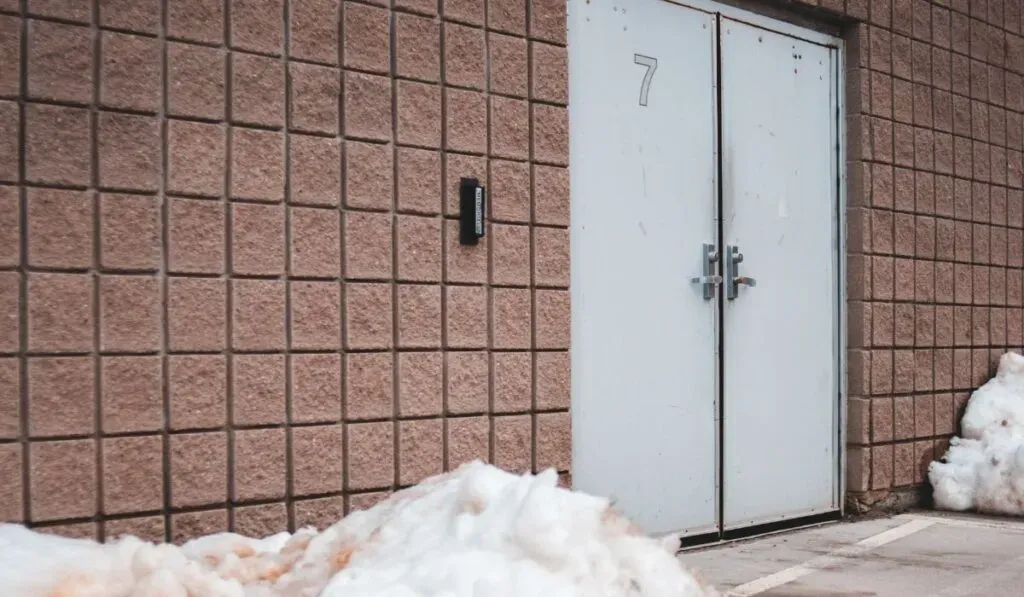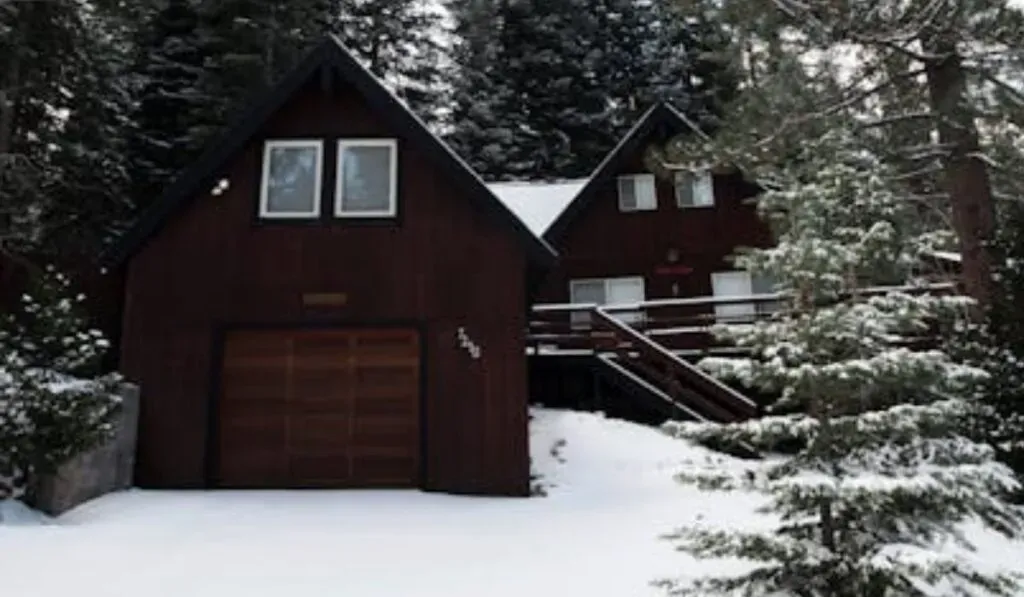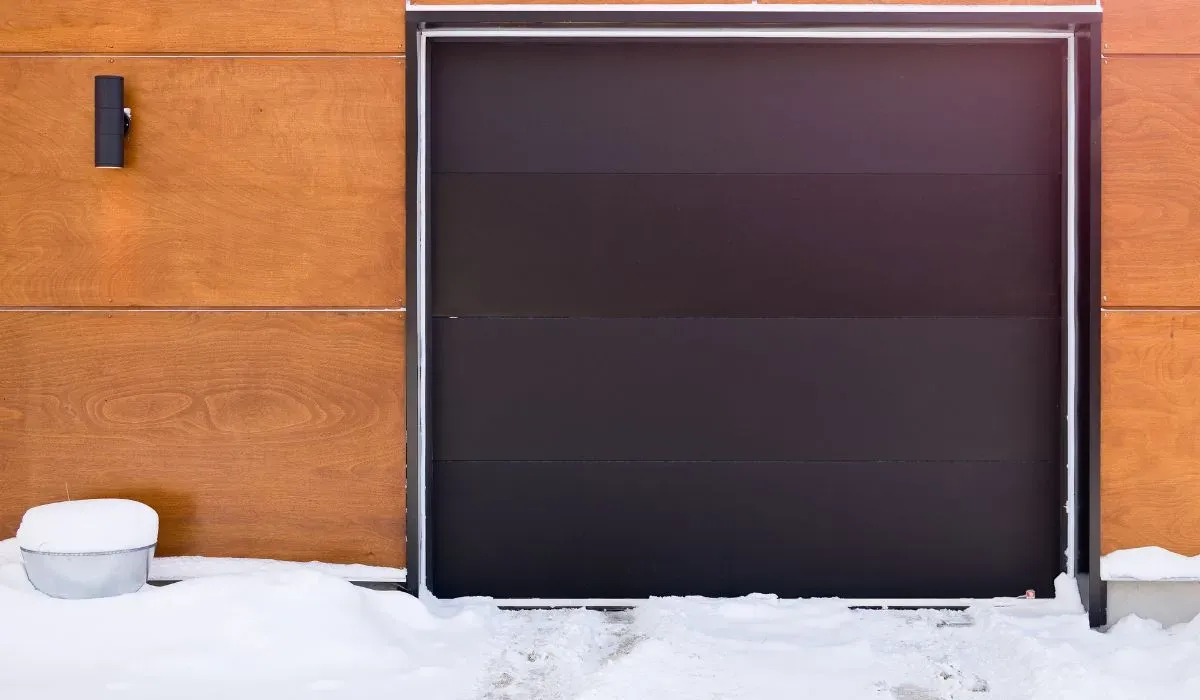Garage door frozen shut issues can cause frustration and costly repairs, but simple tips to prevent freezing can save you money and time. Understanding how to protect your garage door with proper maintenance, insulation, and weatherproofing is key to avoiding stuck doors during cold months.
In Edmonton, winter is tough on garage doors. The cold weather makes garage doors freeze shut a lot. When the temperature drops low, the moisture near the bottom seal can turn to ice. This ice sticks the door to the ground. So, you might find your garage door stuck and hard to open.
Here are some tips to help you keep your garage door working in winter:
- Check seals and hardware often for damage or wear.
- Clear away snow and ice from around your door right away.
- Spray silicone lubricant on hinges and tracks to keep parts moving smoothly.
If you follow these tips, you can avoid many winter garage door problems. Your door will stay easier to open even when it’s cold outside.
Identifying the Frozen Garage Door Issue
Knowing what causes a frozen garage door helps fix it fast. Here are some common things that make doors freeze shut:
- Frozen Bottom Seal – Ice forms between the bottom seal and the concrete slab below. This ice bond makes lifting the door tough or impossible.
- Ice Ridges Formation – Water melts during warm spells but refreezes at night. This creates ridges of ice along the door edges that block movement.
- Garage Door Ice Buildup – Moist air inside or outside the garage turns into ice on parts of the door system. This buildup also stops smooth operation.
These issues come from Edmonton’s cold climate and winter conditions. You can fight them by checking your door often and keeping it clean and well-maintained. That way, you will be ready for whatever winter throws at your garage door!
Safe Thawing Steps for a Frozen Garage Door
If your garage door is frozen shut, you gotta be careful when you thaw it. Doing it wrong can cause damage. Here’s how to thaw a frozen garage door safely:
- Use the manual garage door release – Find the manual release mechanism inside your garage. Pull it to disconnect the door from the opener. This way, you can open or close the door by hand without hurting the motor.
- Gently break the ice around the seals – Look for ice on the rubber seals or where the bottom seal meets the ground. Use gentle ice-breaking techniques. Don’t use sharp tools that might cut or tear rubber. Only push with moderate force if needed.
- Apply warm air using a hairdryer – Turn your hairdryer to low heat. Move it slowly over icy spots to warm them up. Don’t focus heat in one place too long. That can cause glass panels to crack because of sudden temperature changes.
- Avoid pouring warm water directly – Do not pour warm water over frozen parts. It might melt ice, but then refreezes fast and makes things worse (see caution below).
- Dry surfaces thoroughly after thawing – After the ice melts, grab a towel and dry seals and threshold areas well before you use the door again.
- Check opener force settings after thawing – Hook up your automatic opener again. Test its force settings following the manufacturer’s tips or call a pro if you’re unsure.
Follow these safe thawing steps to keep your garage door working well during Edmonton’s cold winters.
Cautions: Warm Water, De-icer (Calcium Chloride) Safety
Using warm water or chemicals to thaw your garage door needs care:
- Warm water warning: Pouring warm water on frozen spots might melt ice quickly, but in cold weather like -25°C in Edmonton, it refreezes fast—sometimes within minutes or overnight.
- Thermal shock can happen near glass panels, too. Sudden heat can crack tempered glass.
- Instead of warm water, use slow warming methods like hairdryers kept at a safe distance.
- Calcium chloride de-icer: Calcium chloride pellets work well at melting ice, but use them carefully near garage doors.
- Think about installing threshold ramps to help drain water away from seals. This stops puddles that freeze and trap your garage door shut.
By keeping these cautions in mind and using proper thawing methods, you’ll protect your garage door system through tough winters year after year.
Proactive Measures for Edmonton Winters
Frozen garage doors cause trouble during Edmonton winters. Snow and ice debris build up fast around the door. When snow piles near the bottom seal, it traps water. This water freezes and sticks the door to the ground. So, clear the snow after every snowfall to stop ice from forming.
Using good weather seals helps, too. Threshold ramps or seals made for cold weather keep water out better. EPDM rubber seals work best because they stay soft and don’t crack like vinyl does. Check your seals often. Replace any that look worn or cracked.
You should also winterize your garage door’s moving parts. Spraying silicone lubricant stops metal parts from freezing or sticking together. It works well because it doesn’t attract dirt like oil-based stuff.
Don’t forget to check how water drains near your garage floor. If water pools there, it can freeze and cause problems again under the door edge. Adding proper drainage solutions keeps water moving away from your door.

Essential Garage Door Maintenance Tips
Keeping your garage door working right means doing regular maintenance during cold months:
- Lubricate Moving Parts: Spray silicone lubricant on rollers, hinges, springs, and tracks at least twice each winter. Silicone spray keeps moisture away without collecting dust.
- Inspect Seals: Look at the bottom seal for cracks or hard spots from cold weather. Replace old vinyl seals with EPDM rubber ones—they handle cold much better.
- Maintain Garage Floor Drainage: Make sure drains near your garage threshold aren’t blocked by leaves or other stuff so melting snow flows away fast.
- Check Threshold Weatherseal: Keep threshold ramps clean and in good shape because damaged ones let water sneak under the door edge and freeze.
Doing these simple tasks helps stop frozen doors and keeps your opener from straining when it tries to lift a stuck door.
Understanding Garage Door Seals
Garage door seals stop cold air, water, and dirt from getting into your garage. When winter hits Edmonton with -25°C temperatures, the seal type matters a lot. It can decide if your garage door freezes shut or not.
Two popular materials for garage door rubber seals are EPDM and vinyl. EPDM means ethylene propylene diene monomer. It’s a kind of synthetic rubber that stays soft even in very cold weather. This softness stops cracks and gaps where ice might form. Vinyl garage door seals are harder when it’s cold. They can crack or pull away from the door bottom more easily.
EPDM seals also fight off UV rays and ozone better than vinyl does. That means EPDM lasts longer outside without getting damaged. Both EPDM and vinyl act as a gasket between your garage floor and door bottom. But EPDM is better at cutting down ice buildup in tough winters.
Picking good materials like EPDM and taking care of your seals lowers the chance that ice will trap your door shut during Edmonton’s chilly winters.
Threshold Ramps and Their Role in Preventing Ice Buildup
A garage door threshold ramp is a raised strip you put on the floor under your garage door. This ramp presses against the bottom weatherseal tightly when the door closes. It also helps stop water from pooling near the slab edge, where ice can form.
Threshold ramps reduce freeze-thaw cycles that cause slippery ice under doors in Edmonton’s cold winters. They work best if you have good drainage around your driveway or garage floor, too — like sloped concrete that moves water away — plus drip edges above walls to guide snow melt safely off.
You should do regular garage threshold maintenance by cleaning out dirt from cracks near ramps so water doesn’t get stuck there and freeze overnight. Also, check your threshold weatherseal for wear because old strips let moisture sneak under, where it turns into ice patches.
If you see lots of ice at your doorway, even with a threshold ramp:
- Make sure drainage slopes away from doors.
- Clear leaves or debris blocking drains near thresholds.
- Think about adding more drip edges above weak spots.
These steps help threshold ramps keep ice buildup low, stopping many cases of garage doors freezing shut each winter.
Advanced Thawing Techniques
Sometimes, your garage door won’t budge with simple thawing tricks. When that happens, a garage door de-icer can help you melt the ice seal safely. Calcium chloride de-icer pellets work well because they melt ice fast without hurting seals or metal parts.
Here’s how to thaw a frozen garage door safely:
- Sprinkle calcium chloride pellets along the bottom seal where it touches the ground.
- Wait 10 to 15 minutes for the pellets to start melting the ice.
- Use gentle ice-breaking techniques. Push with moderate force to break small ice ridges. Don’t hit too hard—that can damage rubber seals or glass.
- If needed, add more pellets and repeat until the door opens easily.

Additional Tips for Preventing Frozen Garage Doors
- Winter parking takes care. Snow piles up at the bottom of your garage door. This can trap water and freeze. When ice forms, the door might stick. Clear the snow often near your garage entrance.
- Use sand on icy spots outside your garage. Sand adds grip. It stops you from slipping when you walk or park near the door. Don’t use salt or strong chemicals. They can hurt seals and concrete.
- Warming up your car inside the garage is risky. Your engine makes carbon monoxide gas when running in a closed space. This gas is dangerous and can kill you if no fresh air flows in. Warm your car outside before bringing it in.
- Be careful using warm water on frozen locks or seals. Hot water can crack glass or damage parts due to sudden temperature changes. Instead, pick safe de-icers to melt ice gently.
Try these simple tips to keep your garage door working during Edmonton’s cold winter.
Get Expert Help for Frozen Garage Doors!
Don’t let a frozen garage door leave you stranded in the cold this winter. At Gulliver Garage Doors, we specialize in safe thawing techniques that protect your garage door’s springs, tracks, and opener from damage while restoring smooth operation. Our experienced technicians understand the challenges Edmonton’s harsh winters bring, and we’re equipped to handle everything from ice buildup along the bottom seal to frozen mechanisms inside your garage door system.
Beyond emergency thawing, we also provide professional garage door maintenance and preventative solutions—like weatherproofing, proper lubrication, and seal replacements—that help stop ice from forming in the first place. Whether your garage door is stuck shut, making unusual noises, or struggling to open in freezing temperatures, our fast, reliable team is ready to help.
Trust Gulliver Garage Doors for dependable service that keeps your garage door working safely and efficiently all season long.
Frequently Asked Questions
What is the role of garage door weatherstripping in frozen prevention?
Weatherstripping keeps cold air and moisture out. Preventing it from freezing stops ice buildup that can jam your door.
How do I maintain my garage door rubber gasket in winter?
Clean seals regularly. Apply silicone spray to keep them flexible and avoid cracking from the cold.
Why is garage door threshold maintenance important for ice prevention?
A well-maintained threshold stops water pooling. This reduces ice buildup that can freeze your door shut.
How does a threshold weather seal help during freezing temperatures?
It seals gaps at the bottom. This blocks cold air and water, reducing ice formation on the door base.
What are the best garage floor drainage solutions to prevent freezing?
Ensure drains near your garage stay clear. Proper slope and drainage move water away from seals to stop ice.

